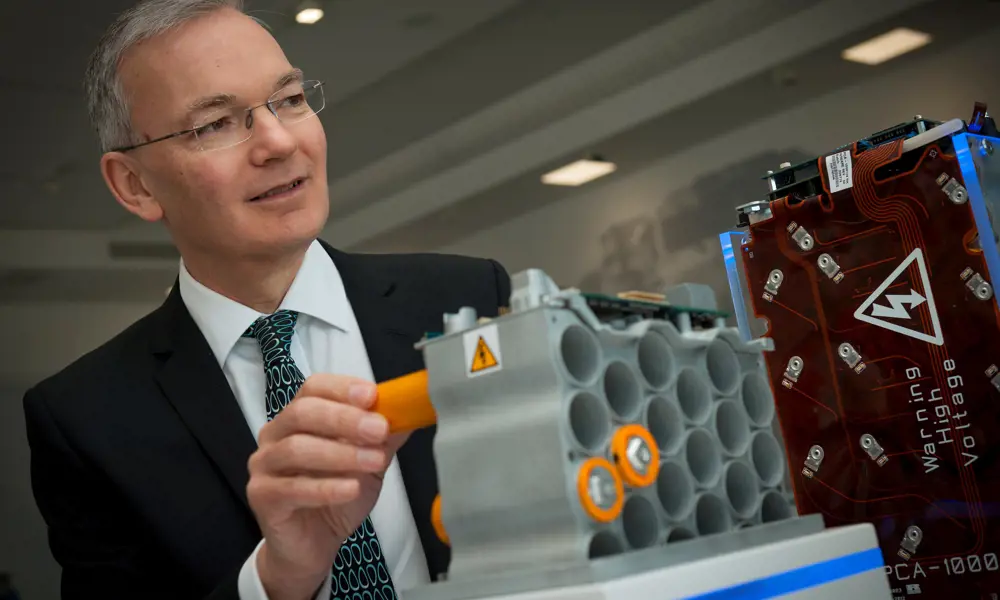
Thinking about the revolutions
Studying for an A level in design technology convinced Professor Neville Jackson FREng that he wanted a career in engineering. He had to design and build his own twin-cylinder steam engine, making his own parts, including the crankshaft and a rotary valve he had also designed himself, and this experience prompted him to study mechanical engineering at Imperial College London. “I had really got interested in engines of all types,” he says. “Especially motorcycles.” After his first few years studying mechanical engineering, Professor Jackson’s degree sponsor Marconi could not guarantee to offer him a full-time position after his final year and suggested that he look elsewhere. He found a job with Ricardo that really fuelled his passion for engines. Established in 1915 as an engines business (and now a global multi-industry consultancy and manufacturer of high-performance products), Ricardo was a natural home for Professor Jackson.
When Professor Jackson joined Ricardo as a development engineer in 1982, working on thermal measurement techniques, the company was still very much an engines operation. Today, engines account for about half of the business says Professor Jackson, now the company’s Chief Technology and Innovation Officer (CTIO). But he explains that, over the years, the company has moved into other areas of automotive engineering. “The first thing that we did was move into complete powertrains, which included transmissions and drivelines. Then came vehicle engineering, and making powertrain systems work in an optimal manner within vehicles.” The engines business is just one of Ricardo’s 10 or so businesses, which include work on railways, energy and the environment, and more recently, the broader domain of mobility.
My job is to understand what is going on outside our business that will affect us in the future: which really important future technologies are going to have an impact on us?
Professor Jackson now spends some of his time anticipating where the transport industry, especially the automotive sector, might be in 20 years’ time. This is, he explains, an important part of his role as CTIO. “My job is to understand what is going on outside our business that will affect us in the future: which really important future technologies are going to have an impact on us? What kind of things can we learn from outside our sectors that could make us a better business?” This emphasis explains why Professor Jackson estimates that he spends 30% to 40% of his time looking at the outside world, studying what is happening in universities and sectors that Ricardo’s core businesses might not typically talk to.
Industry research
Another of Professor Jackson’s roles as CTIO is to lead the company’s R&D strategy and develop the future R&D landscape. Ricardo invests around £10 million a year in research, which includes a significant contribution from research grants via the EU Framework programme and various other government agencies. The company’s corporate R&D division, Ricardo Innovations, delivers research for the whole group while also exploring new technologies that could lead to new business streams. One of Professor Jackson’s key responsibilities is to ensure that the company gets a good return on its investment. “We’re always looking at how we can maximise returns from the investment that we make in R&D,” he explains. “We put a lot of effort into measuring impact.” As you would expect of engineers, Ricardo maintains a detailed record of its R&D spending. “We have comprehensive data going back 15 years,” he adds, “so we know what makes a good investment and what does not.”
We have comprehensive data going back 15 years, so we know what makes a good investment and what does not
Research is so important to Ricardo’s activities that you could almost see it as an R&D arm for the whole industry. “We would like to think that,” says Professor Jackson. “Our business is R&D. We are an R&D service to our customers.” He admits that, when it comes to investing in research, the company’s timing isn’t always perfect. “One of our biggest challenges is often being too early,” he explains. “We will invest in things, spend quite a lot of money, but the customers have not really got to the stage of outsourcing that kind of work yet.” Take advanced driver assistance systems and ‘onboard vehicle functionality’, for example. “We put a lot of effort into that whole area more than 10 years ago and it has taken a long time for that market to develop.” Now, of course, hardly a day goes by without a carmaker, or even an electronics business, touting its latest venture into autonomous vehicles.
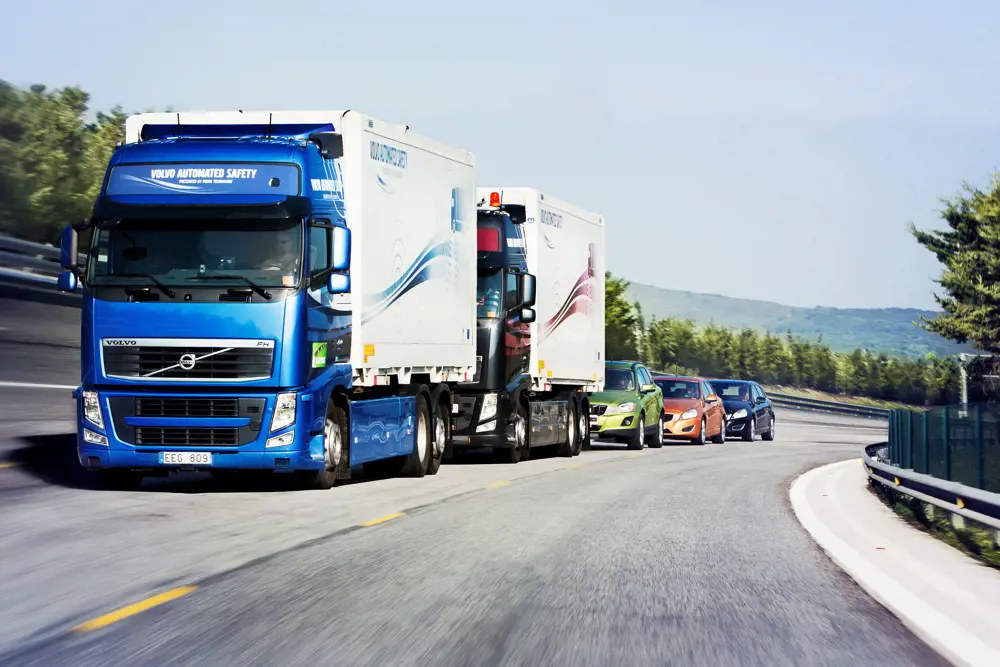
Professor Jackson believes that platooning, where automated heavy goods vehicles follow each other under the guidance of the lead vehicle, could make this form of transportation more energy efficient and transform drivers’ working hours © Ricardo
Professor Jackson’s take on autonomous vehicles is that the first widespread application of the technology could be in ‘platooning’ of heavy goods vehicles: ‘trains’ of automated vehicles that travel three or four metres apart, with trucks braking and accelerating under the guidance of the lead vehicle. Ricardo first worked on platooning about eight years ago. Professor Jackson sees two significant advantages to platooning: vehicle efficiency and the working hours of drivers. “Running the vehicles together could lead to a significant aerodynamic benefit, and running four or five vehicles together could save between 10% and 15% on fuel consumption.” Current law says that drivers can spend only so many hours behind the wheel. “If the drivers in following vehicles could get a rest credit because they are not driving, when they have finished platooning across Europe they might not have to take a rest break when they have got to peel off and follow their own routes.” This would not only cut costs for truck operators; it could also be a solution to a potential shortage of drivers. “There are concerns about the lack of drivers for trucks, particularly in the US, and some level of autonomy could help to alleviate that.”
There are concerns about the lack of drivers for trucks, particularly in the US, and some level of autonomy could help to alleviate that
“What is impressive,” adds Professor Jackson, “is to see the whole road train with three or four metres between each vehicle doing an emergency stop. There is one vehicle that is always going to be the worst at slowing down. The rest are modulating their braking to maintain the gap. It is really interesting to watch how the control systems make that work.” Ricardo recently played its part in ensuring the safety of truck platoons as a part of the EU’s EcoTwin project, which gathered together specific knowledge and experience from a consortium of European organisations to automate two trucks to drive closely behind each other. When advising on the safety of autonomous vehicles, the company drew on its experience in rail systems and their safety assurance processes.
Secure systems
Rail is an important part of Professor Jackson’s domain that has grown considerably over the years. When he joined Ricardo, the company employed around 400 people; these days it employs a team of over 450 rail engineers and specialists alone, with 200 of those employed in Utrecht in the Netherlands. The company is a certified independent authority in the rail industry, which means that it ensures that companies operate robust safety and security assessments. “You need independent assurance of a system before you can operate it,” explains Professor Jackson. This is what led to Ricardo taking its knowledge of safety requirements for driverless systems from the rail industry and applying it to autonomous vehicles.
Professor Jackson sees software security as a growing subject for the automotive industry. “At the moment, a premium vehicle could have up to 100 million lines of code in it. Only a very tiny part of that is safety critical, while most of it is in the ‘infotainment’ system. Increasingly, as we go towards advanced driver assistance and autonomous systems, more and more of that software will become safety critical.”
Ultimately, you want to stop the driver from doing stupid things, how can you stop them from crashing into the vehicle in front or rolling the car over? How do you ensure that when they brake they can still steer?
Even before autonomous vehicles can take over complete control, there will be increasing software-controlled ‘driver assistance’ in cars. At the moment, it may just be the car’s throttle that is controlled through a ‘drive-by-wire’ electronic link rather than a physical connection. Before long, Professor Jackson predicts that it will be brake-by-wire, followed by steering and other controls. “Ultimately, you want to stop the driver from doing stupid things,” he explains. “How can you stop them from crashing into the vehicle in front or rolling the car over? How do you ensure that when they brake they can still steer? Then, looking at the steering, did you really want to change lanes there?” Any ‘by wire’ control relies on safety critical software that has to be checked for coding errors.
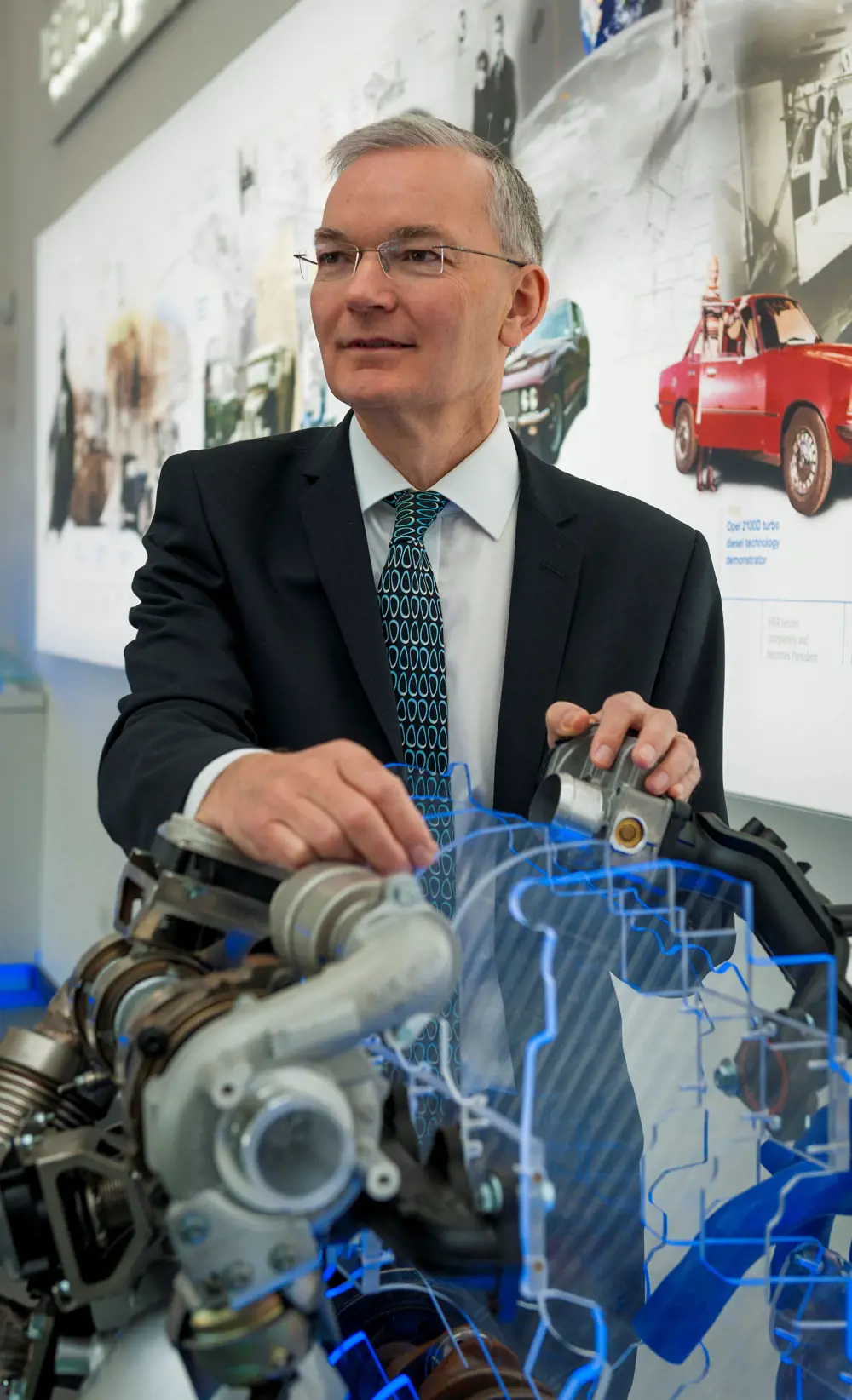
Professor Jackson’s personal view is that current demonisation of diesel is a blip. “Diesel is used because it has lower CO2 emissions, the engines have been cleaned up with particulate traps and huge strides have been made in particulate levels where, quite frankly, a diesel is better than gasoline. However, in doing that we have introduced a problem with nitrogen dioxide, which is poisonous.” © Ricardo
Key infrastructure
Thinking about how the electronics in a vehicle will change is another area where Professor Jackson’s role extends beyond his work within Ricardo. He has led the development of a long-term technology ‘roadmap’ for the ‘future electrical and electronic architectures’ for vehicles for the UK Automotive Council. He has also been responsible for producing roadmaps on fuels and energy, heavy duty and commercial vehicles, the internal combustion engine and virtual product engineering, which have now become the key strategy documents for the UK Advanced Propulsion Centre – an organisation that was created by the auto industry, and jointly funded with the government, to support technology commercialisation. Professor Jackson draws on this work to support his take on the future of motoring. It may take some time for fully autonomous cars to be viable and certified safe and become accepted by motorists, but there are fewer obstacles to the take up of electric vehicles, especially as prices come down. “The costs of the battery for electric vehicles will probably cease to be a critical issue by 2030,” he predicts. But that is not the challenge: he wonders how the electricity distribution infrastructure can be upgraded to recharge the ever-larger battery packs fitted to vehicles.
Professor Jackson sees the local power network as the real challenge: plug in every car parked on a suburban road and “the whole thing will fall apart. It will blow the substation.” Average maximum power demand for UK dwellings is between 7 kW and 8 kW (kilowatts), with a peak hourly load of around 2 kW with domestic electric heating and 1 kW without. This will be at least doubled with electric vehicle charging. “As batteries become bigger, it will take more than a day to recharge an 80 kWh battery by plugging into a 3 kW supply. Larger batteries will need 7 kW or 14 kW recharging facilities to be practical, but there is currently not the capacity to do it.” Who is going to pay to bring that capacity to those urban streets? Professor Jackson asks. “Ricardo’s energy environment group has extensively explored this whole issue of changing the way that the grid is operated to get as much use of existing capacities as possible.”
This leads Professor Jackson on to thinking about how much we use our cars. As he says, “95% of the time, your vehicle is sitting on the road doing nothing. It is such a waste of resources and capital. If you could increase that usage from 5% to 30%, the cost per mile goes down dramatically in terms of capital cost. You can make the whole mobility system so much cheaper.”
Professor Jackson doesn’t talk so much about cars as about mobility. Another big area for him is ‘smart cities’, an area that he agrees is “a little bit hyped” but it does encourage wider thinking. “Mobility is not just about the vehicles; it is about the infrastructure, and the communications and energy systems required by the city. It is also the logistics. How do we move people and goods around efficiently and at the right time? How do we achieve this without causing congestion and what kind of vehicles do we need?”
Mobility is not just about the vehicles; it is about the infrastructure, and the communications and energy systems required by the city. It is also the logistics.
An engineer of AI
Recently, Professor Jackson has also put a lot of time into another overarching aspect of the automotive industry, the application of machine learning and artificial intelligence (AI) to product design, validation and manufacturing. He explains the issue with his own set of questions. “How do I speed up the computer-aided engineering process and do less testing? How can I learn from all of the data that I have on all of my past products – and all of its in-service characteristics – so that I can make better decisions in the design process? What can happen if I use machine learning and AI to optimise design?”
He urges all engineers to pay more attention to the opportunities of exploiting AI. His message is to not leave it to the financial and pharmaceutical industries to make all the running. “I have put a lot of time into that in the last couple of years, working out what it means for us as a business. Thinking seriously about what AI can do for engineering, especially product design, development and manufacturing.” Again, he throws questions out for his fellow engineers to consider. “How can we optimise our manufacturing operations right from the early stages of design? How do you join up the whole engineering process under a virtual connected system?”
there is the law that says that the amount of data produced grows much faster than your ability to analyse it. AI can help with all that data. Knowing what to do with, and what is in, really big data is one of the issues of engineering data
There is, Professor Jackson admits, something of a data challenge in engineering, which may explain why it is harder to deploy AI. “Within an engineering context, many of us have vast amounts of digital data but digging into that and reusing it is really labour-intensive.” He sums up the issue through three laws of data processing. “There is Moore’s law [in its broader sense that overall processing power for computers will double every two years], which we all understand,” he explains. “There is another law that says that the amount of data produced increases exponentially according to the number of connected systems you have. Then there is the law that says that the amount of data produced grows much faster than your ability to analyse it. AI can help with all that data. Knowing what to do with, and what is in, really big data is one of the issues of engineering data. A good example for engineering data is the definitions for rows and columns of seemingly random numbers – what units do they use? The idea behind the AI systems is that if you are intelligent enough you can work it out.”
Timeline and Distinctions
Born, 1959. Awarded a bachelor’s degree in mechanical engineering, 1982. Development engineer in Ricardo’s gasoline research department, 1982–1984. Various roles in Ricardo’s diesel research department, 1984–1992. Manager, powertrain and vehicle research department, Ricardo, 1992–1995. Senior manager, engine engineering, Ricardo, 1995–1998. Chief Engineer – technology, Ricardo, 1998–2000. Product Group Director, technology, control and electronics, Ricardo, 2004–2005. Global Product Group Director – advanced technology, Ricardo, 2000–2010. Group Technology Director, Ricardo, 2006–2010. Visiting Professor, University of Brighton, 2006–present. Fellow, Institution of Mechanical Engineers, 2009. Chief Technology and Innovation Officer, Ricardo, 2010–2019. Fellow of the Royal Academy of Engineering, 2011. Vice Chairman, European Road Transport Research Advisory Council, 2011–2019. Chairman, RAC Foundation, 2020–present.
Cleaner engines
For all his thinking about the future and the bigger picture of transport, or mobility, Professor Jackson has not abandoned today’s problems. He still has to think about the engines that attracted him to engineering and Ricardo. For example, diesel engines have witnessed an amazing about-turn. Until very recently, they were sold as motoring’s solution to climate change; in the short-term at least, the diesel engine is now painted as the primary cause for poor air quality in cities and an overnight disaster. Poorly designed emissions regulations restricted the need for emissions control to a specific driving pattern, which led to much larger emissions of nitrogen oxides (NOx) in real-world operation.
Professor Jackson’s view is that the illegal cheating in emissions tests exposed in the US was a one-off and that the industry can deal with NOx, albeit at a price. The problem with diesel emissions is “nothing new,” says Professor Jackson, who reviewed nearly a century’s work on controlling emissions when he worked on a presentation for the Royal Academy of Engineering’s View from the top event in 2015, entitled Future mobility, energy and resources – a perspective formed from 100 years of innovation. “There was a stage where there was such a problem with buses’ diesel emissions that bus drivers were liable to be stopped by a policeman and sent back to the depot if there was too much smoke.” The answer, he adds was to gradually refine and get better. In recent years, diesel emissions have been reduced, although he insists that there is still room for more refinements.
However, engineering has not reached the end of the road. By 2020, Professor Jackson predicts that diesels will be as clean or cleaner than their gasoline counterparts. “The downside is that they will get more expensive because of the cost of after treatment and emission exhaust control.” His assessment is that the extra cost of cleaner diesel engines, in addition to the existing cost premium over gasoline engines, could be between £500 and £1,000.
Whether that’s magnetic materials, or battery materials, or in the future, maybe even water, those are going to be increasing challenges
There are plenty of reasons for Professor Jackson to keep an eye on advances in diesel engineering as well as the wider issue of mobility. It is an important part of his position as an expert on the future of automobiles in a low-carbon world and mobility, a concept that goes beyond transport. As well as keeping a close eye on the energy business, Professor Jackson keeps an eye on the bigger picture. That stretches into thinking about such subjects as total environmental impact of future policies and products, such as the need for what he dubs as scarce resources. “Whether that’s magnetic materials, or battery materials, or in the future, maybe even water, those are going to be increasing challenges.”
This activity inevitably takes Professor Jackson into working for governments. “We do quite a lot of work on policy, supporting governments, cities and public authorities to advise them on transport solutions and how they can select the right kind of vehicles for their specific operations.” This outwardfacing remit also includes Professor Jackson’s roles on industry bodies and in policymaking circles in Brussels and the USA, for example. “I will try and work with policymakers to understand what direction they are trying to go in, and then how it relates to the automotive industry, the energy industry, or the rail industry in general.” Today, then, Professor Jackson has a much wider view of the engines of change.
***
This article has been adapted from "Thinking about revolutions", which originally appeared in the print edition of Ingenia 71 (June 2017).
Contributors
Michael Kenward OBE
Author
Keep up-to-date with Ingenia for free
SubscribeRelated content
Mechanical
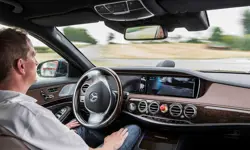
When will cars drive themselves?
There are many claims made about the progress of autonomous vehicles and their imminent arrival on UK roads. What progress has been made and how have measures that have already been implemented increased automation?

R&D investment makes good business sense
In just five years, Dr Ralf Speth FREng has presided over a revolution in design and manufacturing that has helped create a new family of engines and has overhauled Jaguar Land Rover (JLR) production facilities.

Bikes help improve skills and attitude
The Archway Project is an independently-funded scheme that is expanding its engineering-based programmes by providing BTEC certificates and diplomas. John Milton, the director of the project, explains what the charity does to help reduce anti-social behaviour and improve employment prospects.
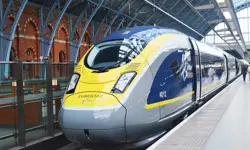
High speed evolution
In December 2010, Eurostar International Ltd awarded a contract for 10 new high speed trains to Siemens. The company has used a system developed over decades to maximise the performance and passenger-carrying ability of its 320km/h trains.
Other content from Ingenia
Quick read

- Environment & sustainability
- Opinion
A young engineer’s perspective on the good, the bad and the ugly of COP27

- Environment & sustainability
- Issue 95
How do we pay for net zero technologies?
Quick read

- Transport
- Mechanical
- How I got here
Electrifying trains and STEMAZING outreach

- Civil & structural
- Environment & sustainability
- Issue 95